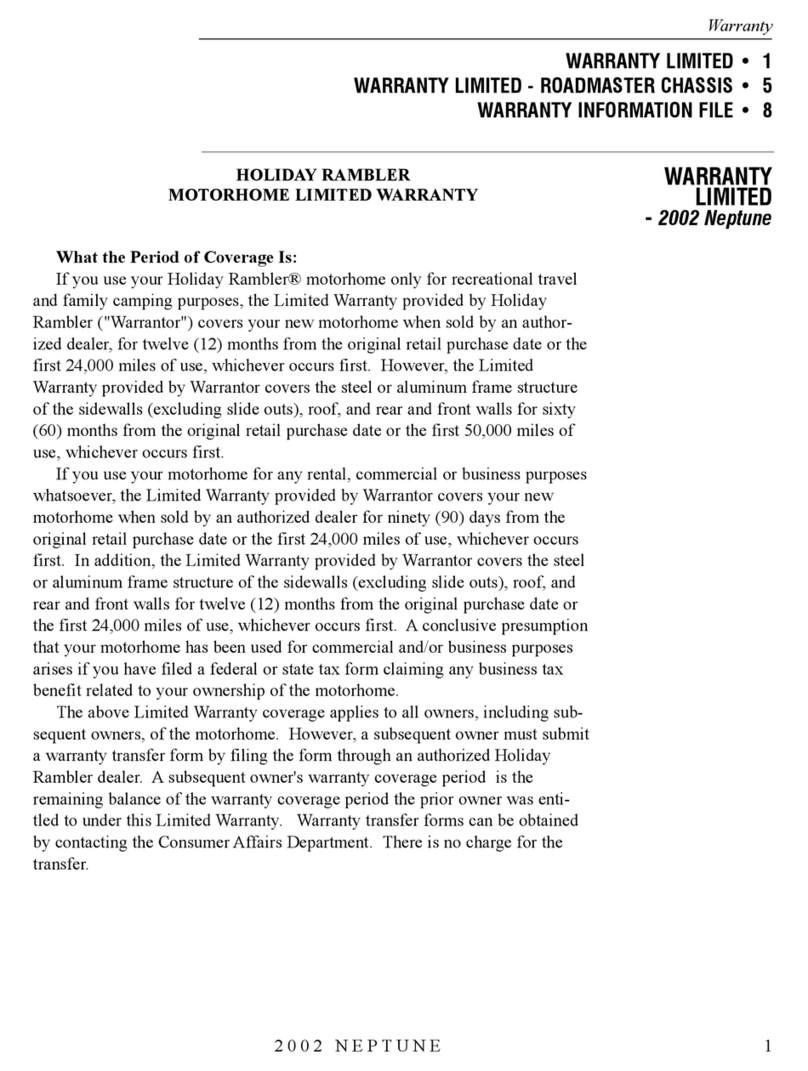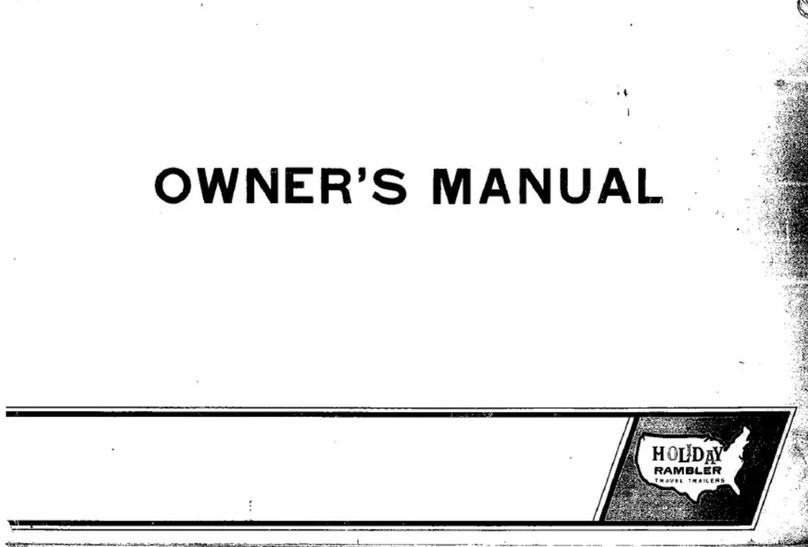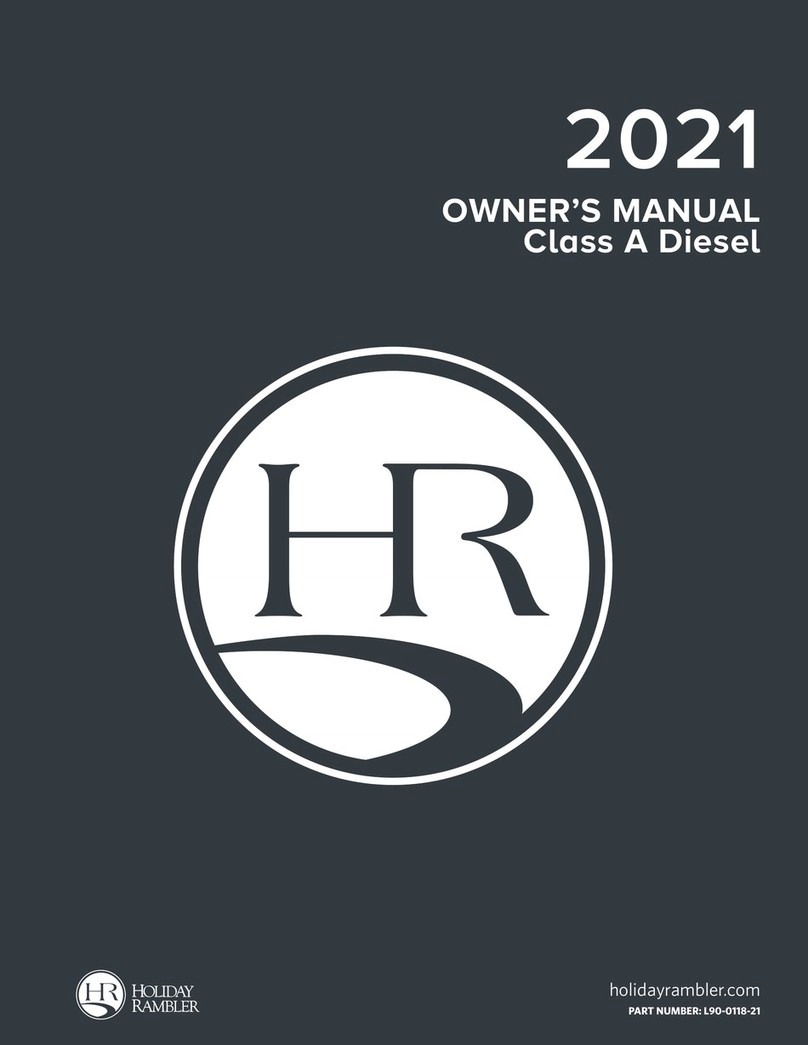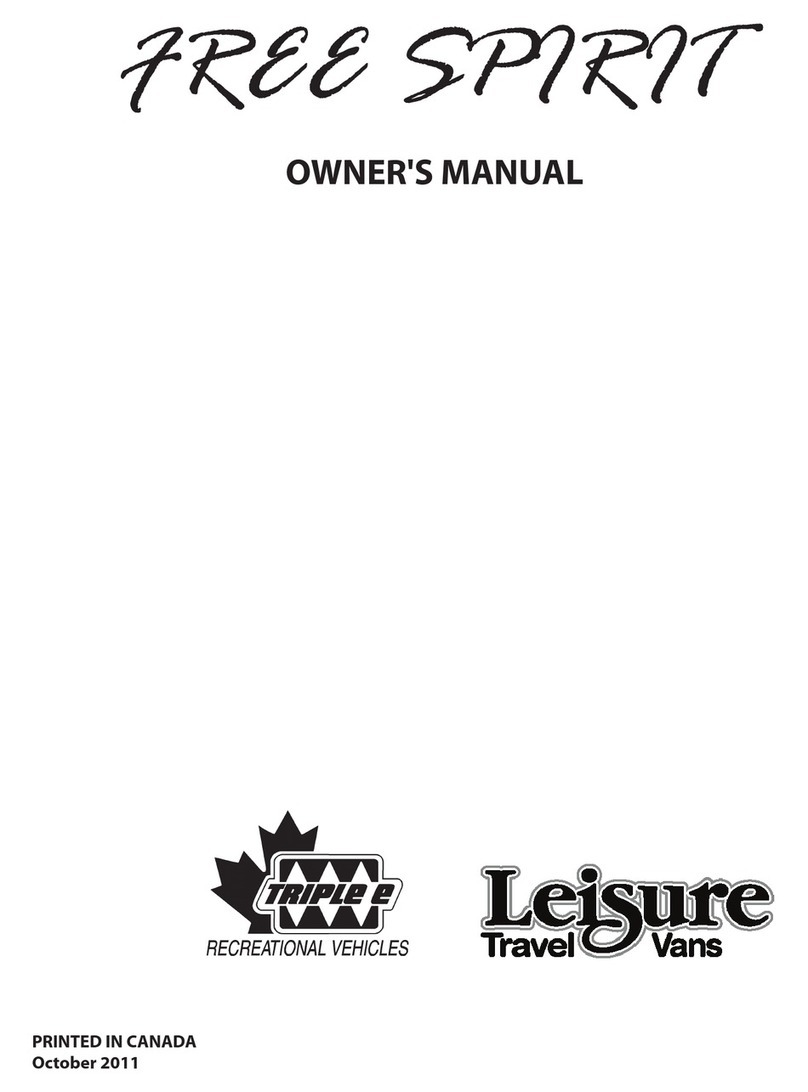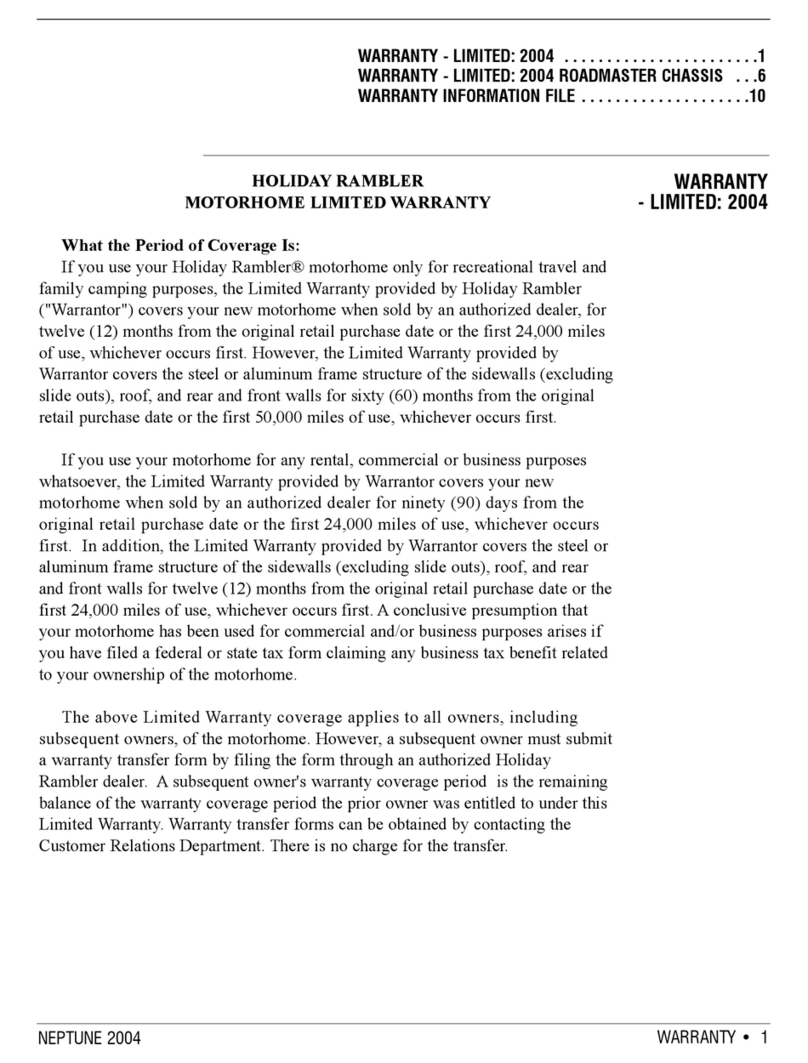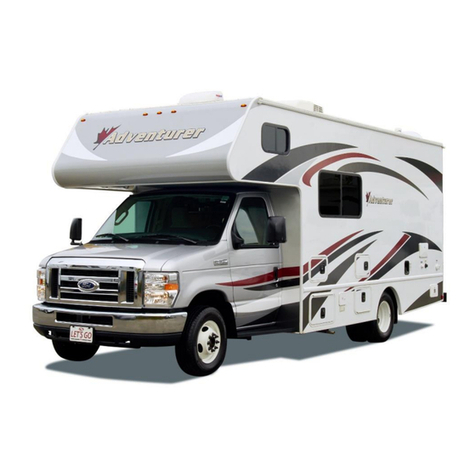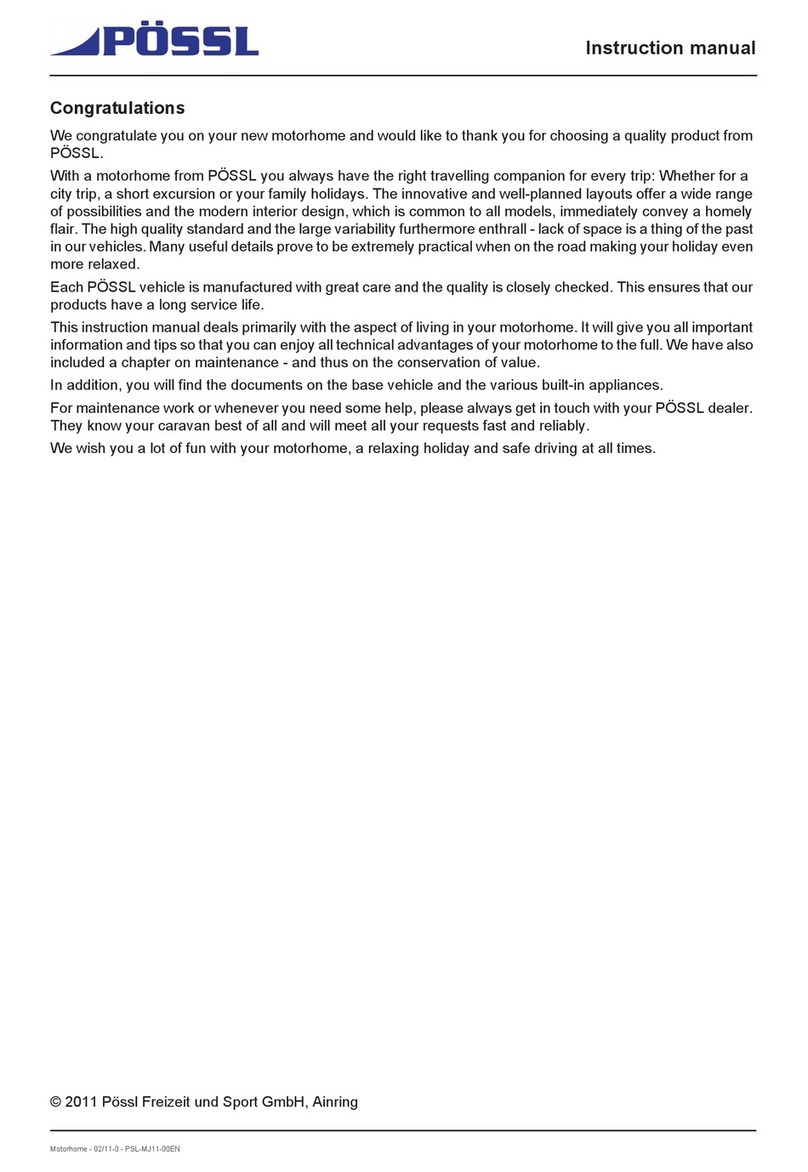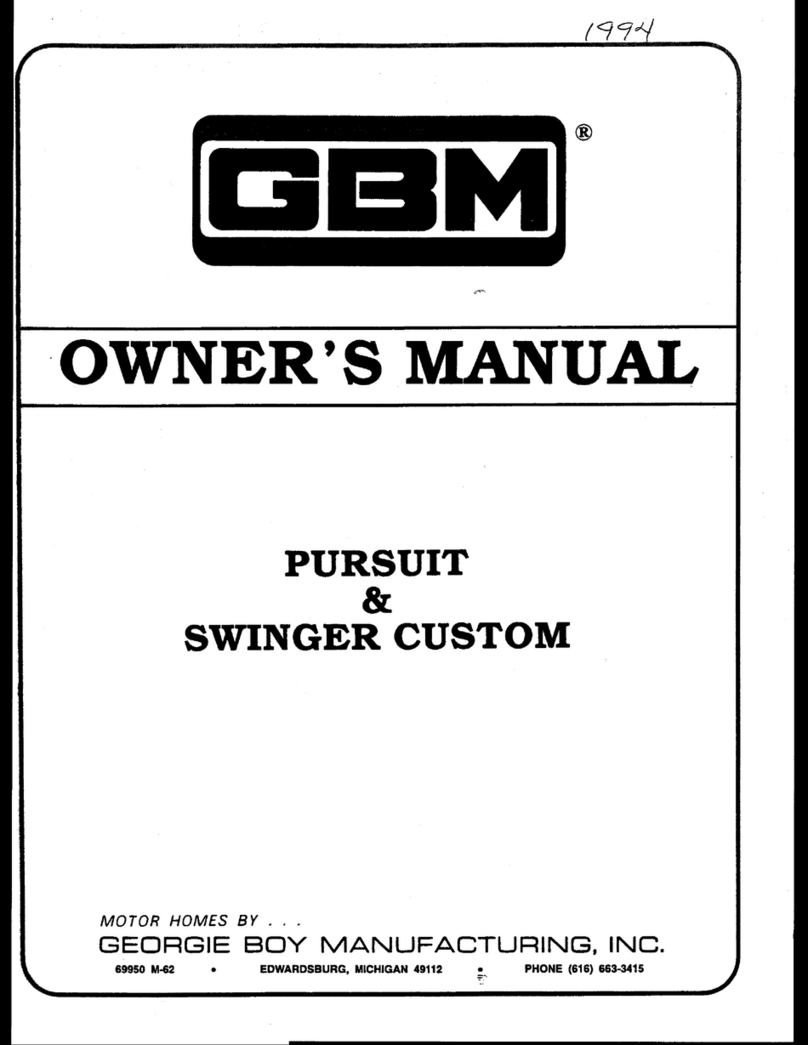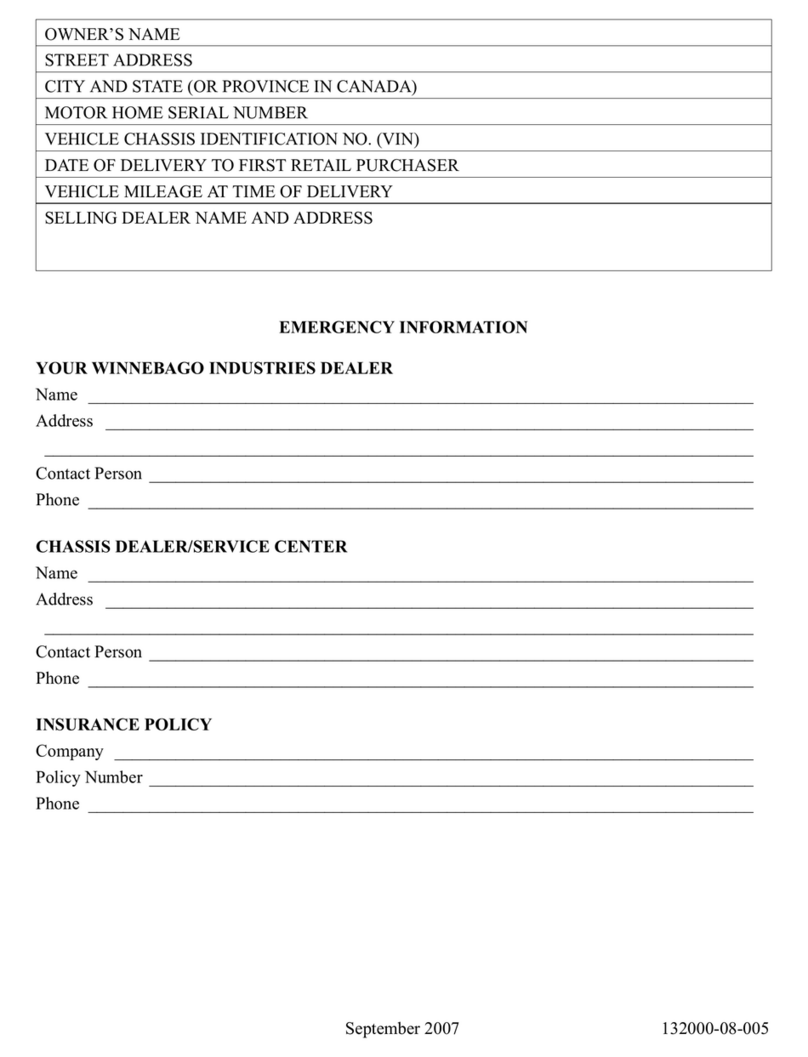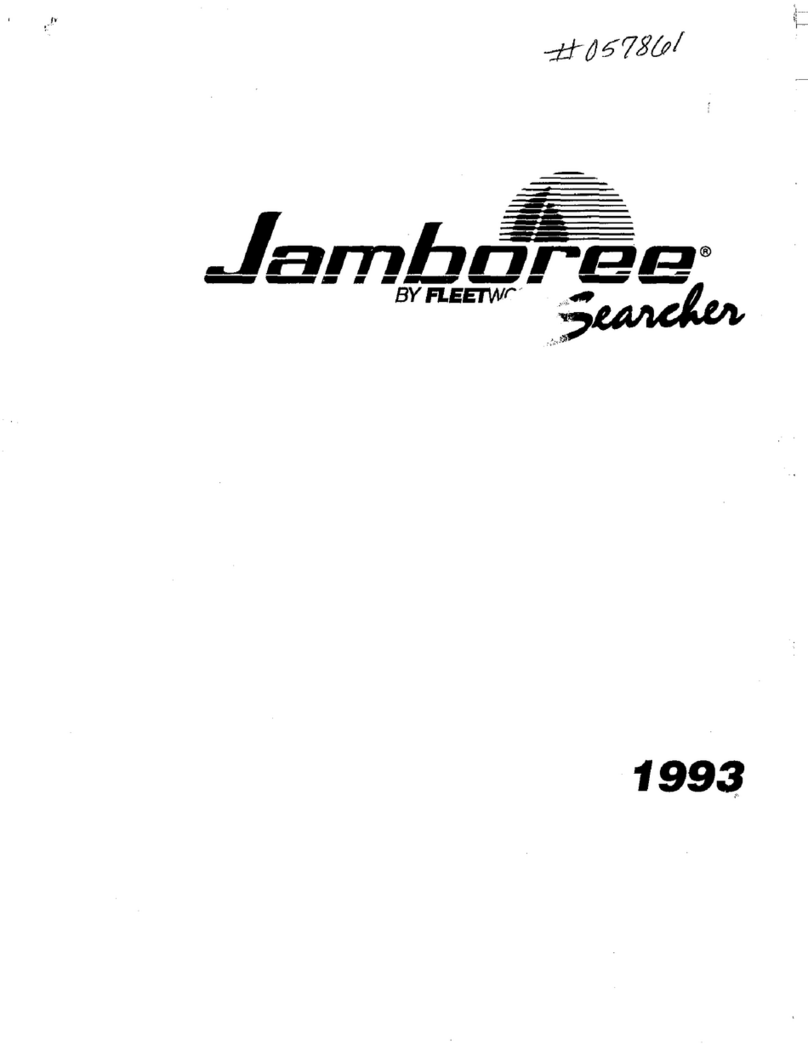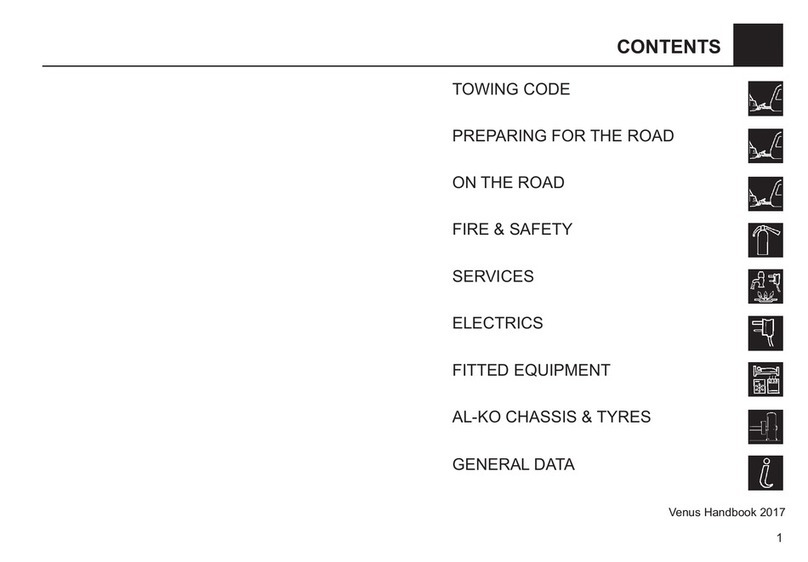WARRANTY STATEMENT
HOLIDAY RAMBLER
606 Nelson’s Parkway
Wakarusa, Indiana 46573
Telephone 1-219-862-7278 or
1-877-466-6226
2000 Model Year
MOTOR HOME LIMITED WARRANTY
Holiday Rambler, a division of Monaco Coach Corporation warrants that this motor home, when used for its
intended purpose of recreational travel and family camping, will be free from defects in materials and workmanship for
a period of 12 months or 24,000 miles, whichever occurs first. EXTENDED ALUMAFRAME® STRUCTURE WAR-
RANTY: Holiday Rambler warrants that the Alumaframe structure of the side walls, roof, rear and front walls will be
free from defects in materials and workmanship for a period of 60 months or 50,000 miles, whichever occurs first. The
warranty periods shall begin on the date the motor home is delivered to the first retail purchaser or, if the motor home
is first placed in service by the dealer for personal use prior to sale at retail, on the date the motor home is first placed
in such service.
This coverage applies to all owners of the motor home. However, to obtain any remaining warranty benefits
for subsequent owners, a warranty transfer form must be submitted through an authorized Holiday Rambler dealer and
a $25.00 transfer fee paid to Holiday Rambler to cover administration costs. The warranty transfer forms are available
from the Consumer Affairs Department upon request.
In the event that a defect in material or workmanship is found to exist, Holiday Rambler will bear the cost of
the repair or replacement of such defective materials or workmanship; provided that the owner:
A) notifies Holiday Rambler or one of its authorized dealers of the defect within five (5) days of discovery of
it;
B) returns the motor home to a dealer promptly, as scheduled; and
C) pays any freight costs, or import duties or fees involved.
NOTE: Holiday Rambler does not control the scheduling of service work at the dealerships. You may encounter some
delay in scheduling or completion of work.
Defects or damage to paint, flooring, cabinetry, fabrics or other appearance items that may occur prior to deliv-
ery usually are corrected during the inspection process at the assembly plant and the dealership. In the event you find
any of these concerns when you receive your motor home, notify your dealer without delay.
If you need assistance in obtaining the benefit of this Limited Warranty, please contact Holiday Rambler at the
above telephone number between 7:30 a.m. and 4:00 p.m. EST on regular business days.
Holiday Rambler does not authorize any person to create for it any other obligation or liability in connection with this
motor home. ANY IMPLIED WARRANTY OF MERCHANTABILITY OR FITNESS FOR A PARTICULAR PURPOSE
APPLICABLE TO THIS MOTOR HOME IS LIMITED IN DURATION TO THE DURATION OF THIS WRITTEN WAR-
RANTY. THE PERFORMANCE OF REPAIRS IS THE EXCLUSIVE REMEDY UNDER THIS WRITTEN WARRANTY
OR ANY IMPLIED WARRANTY. HOLIDAY RAMBLER SHALL NOT BE LIABLE FOR INCIDENTAL OR CONSE-
QUENTIAL DAMAGES (FOR OTHER THAN INJURY TO THE PERSON) RESULTING FROM BREACH OF THIS
WRITTEN WARRANTY OR ANY IMPLIED WARRANTY.
Admiral 1-9
W
Warranty & Information
arranty & Information 2000
HOLIDAY RAMBLER




